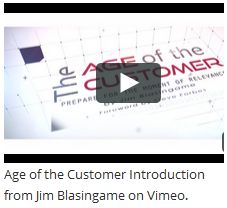And when I die, and when I’m gone, there’ll be one child born in this world to carry on, to carry on.
— “And When I Die,” by Laura Nyro, performed by Blood, Sweat & Tears.
As we know, change has been the one constant of existence on planet Earth. Each generation gives way to the next, so that over time fire became electricity and the wheel morphed into a computer.
For most of the history of the marketplace, change progressed at a pace slow enough to allow the creator of a model – a product, strategy, skill, etc. — to make a living with it for a lifetime, possibly even passing that model on to his children. But within the past century this paradigm began to shift.
During the second half of the 20th century, the life expectancy of a typical model generation was compressed into a calendar year. So while you were delivering the current year’s model to customers, you had to simultaneously create and prepare next year’s model to be ready to launch January 1.
That was a nice trip down memory lane, wasn’t it? Buckle up.
Since 1993 (the year the Internet became available to the public), an unprecedented confluence of innovations has further compressed the time between model generations. This compression produced high anxiety and frustration for any business that was in love with its model. Indeed, the life expectancy of a model that not so long ago would have been a calendar year was now measured in terms of an Internet year, which is 90 days — or less.
The headwaters of this increased velocity of marketplace change is innovations that are driving new customer expectations. And these innovations have become so seductively elegant and seamless in our lives that customers often don’t even realize their expectations are changing at all, let alone how fast.
But what about your business’s anxiety and frustration? Well, even if customers know, they don’t care. Because they worship at the throne of WIIFM. What’s In It For Me?
I have good news! You can avoid anxiety, frustration — and failure — if you know what your customers’ evolving expectations are, which you can determine by asking them these five questions – every day:
1. What do you want?
2. How do you want me to tell you about it?
3. When do you want it?
4. How will you use it?
5. How do you want it delivered?
Comparing the answer to these questions with what customers told you yesterday will provide all the information you need about current and future products, service and technology, including — especially — your social media and mobile strategy.
Let me put all of this in one sentence: If you want to know what your business should be doing tomorrow, next month and next year, ask your customers. They already know. And if you do what they tell you, you’ll be able to sing these new lyrics without any blood, sweat or tears:
“And when our model dies, and when it’s gone, we’ll produce a new model in this world to carry on, to carry on.”
Write this on a rock … Customers will tell you about their changing expectations – let them.





